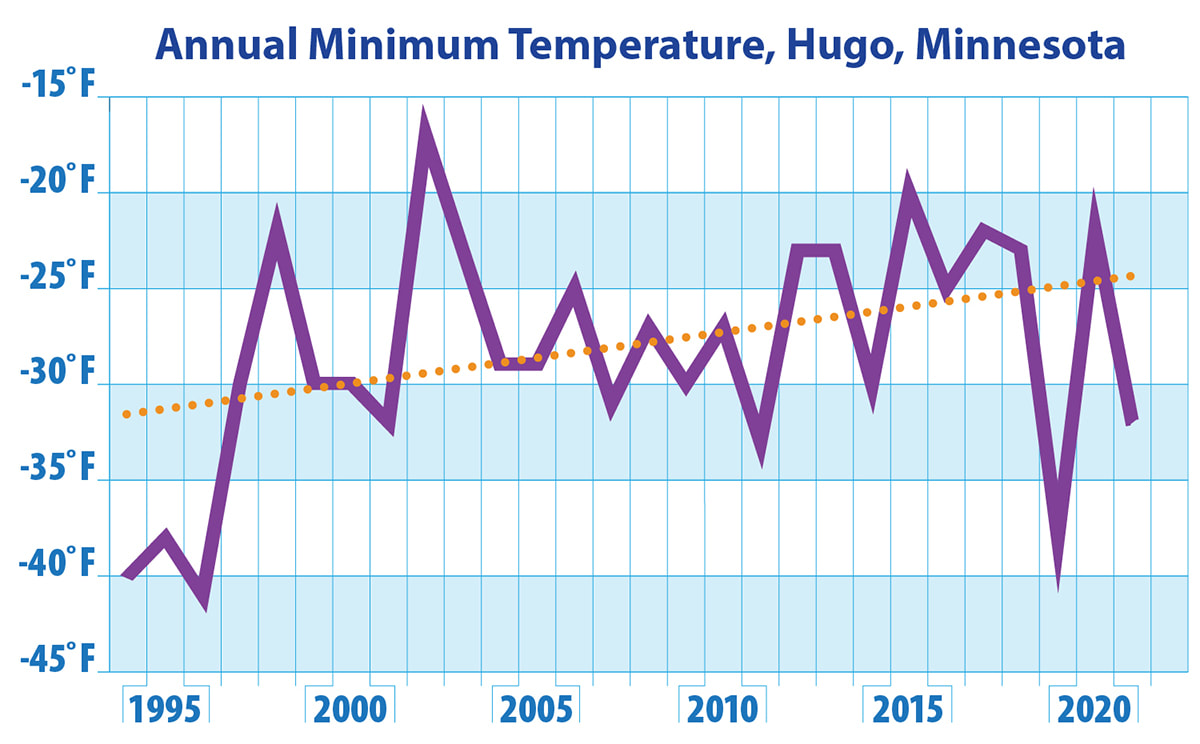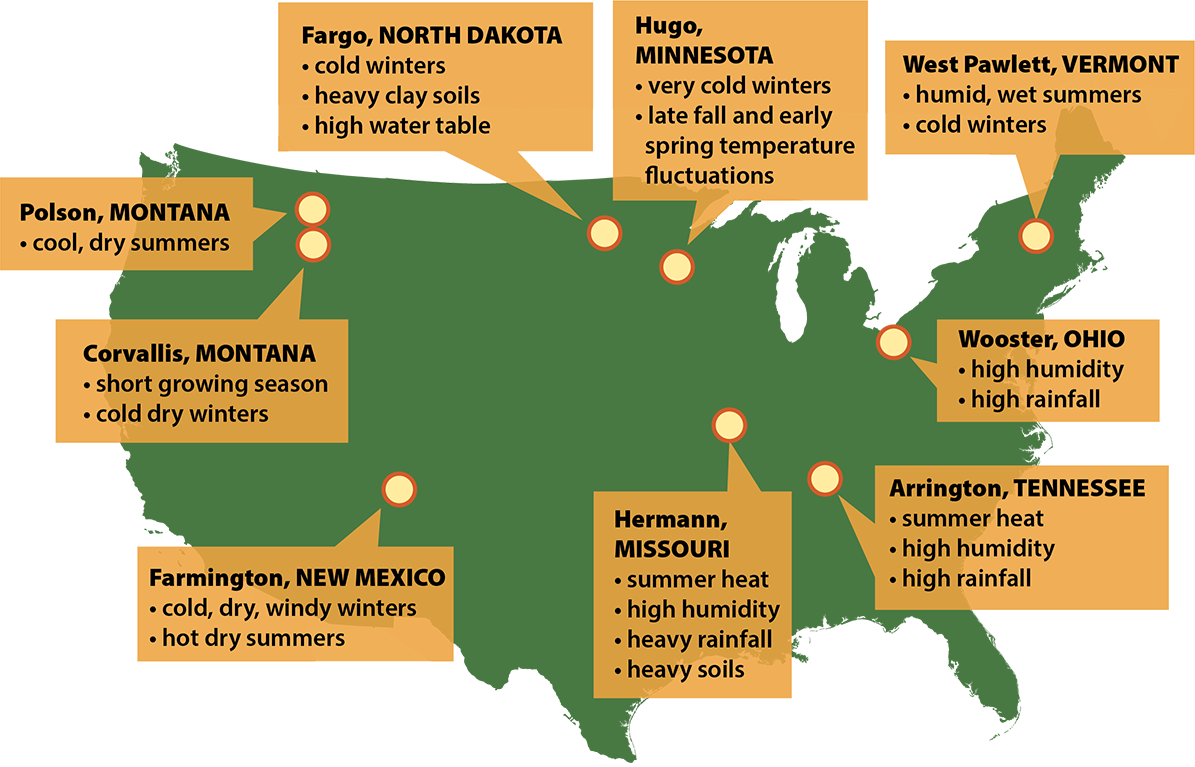Breeding Work Continues with Expanded Goals and Exciting Results
I am on a 10-year plan to finish the grape breeding work I started 30 years ago. Listening to the needs expressed by growers and oriented by the trends in the changing climate, I have my sights on several new goals. Here is a short look at three current breeding projects.
|
Enhanced Berry Integrity Under Stress
One of the trends we see all over the Midwest and Northeast is that we are getting wetter -- more rainfall, more frequent heavy rainfall events, more late season rain, higher dew points. Almost all of our cold climate grapes have rather thin skins, making them vulnerable to splitting and rots during these wet periods. Thin skins also make the berries more susceptible to damage from Yellowjackets and Asian Lady Beetles. For the past seven years, I have been working to develop a grape that combines the tough skins of my T.P. 2-3-51 with the winter hardiness of Petite Pearl. T.P. 4-2-85 and T.P. B-1-1 are two of the best early selections from our breeding for tough skins. We expect even better selections to come from our recently-planted 3rd generation seedlings. |
Greater Hardiness
For over a decade, the winters in the Midwest and Northeast have been trending more mild. However, the hallmark of climate change in these regions is sudden, unexpected, and extreme excursions in temperature. The Polar Vortex of 2014, the extreme cold of late January of 2019, and the prolonged extreme cold of February, 2021, showed us that most of our grape varieties are still not hardy enough, even as the overall trend is for milder winters. For many years, I have been backcrossing our named varieties to hardier parents. The results are promising. Two new seedling selections from this breeding, T.P. 4-4-70 (pictured above) and T.P. B-4-16, survived -38F with no injury during the January, 2019 cold event and the -32F cold event in mid-February of 2021. |
A Hardy French or Spanish Style White Wine Grape
I love the rich fruity flavors and dense body of wines produced by Chardonnay and Semillon grapes. I also love the crisp, citrus and mineral white wines of Southwestern France and Basque Country. In breeding hardy white wine grapes, this is the genetic material I have used to bring high wine quality into my crosses. At the end of 2023, we made eight new selections of white wine grapes for advanced evaluation and wine making. Based on vineyard performance to date and evaluation of the first wine samples. We also have a thousand more younger seedlings to grow up and evaluate. |

YouTube Presentation at Ohio State
Click on the image to view a video from the 2021 Ohio Virtual Grape and Wine Conference in which Tom Plocher presents his work on "Developing New Wine Grapes for the Midwest in the Era of Climate Change."
Click on the image to view a video from the 2021 Ohio Virtual Grape and Wine Conference in which Tom Plocher presents his work on "Developing New Wine Grapes for the Midwest in the Era of Climate Change."
Exploring the Range of Variety Adaptability
|
The seedlings that result from my crosses are first grown out in Hugo, Minnesota, located 20 miles northeast of St Paul. There, the seedlings are initially selected for winter hardiness and other key characteristics. The official USDA hardiness Zones place Hugo in Zone 4B. However, that is a bit misleading. The vineyard is situated on a small glacial moraine in the middle of a wide shallow depression. When large cold fronts move in during the winter, the depression fills up with cold air, immersing the moraine. Turns out, this is a very cold spot. |
Our winter lows are more like Zone 4a or even 3b, with the average annual low temperature being 29.4 degrees F over 21 years. Eleven of those 21 years saw annual minimum temperature colder than -30F. Typically, the low temperatures in the vineyard during the winter are 5-7 degrees Fahrenheit colder than those reported in the media for St. Paul and Minneapolis. Low temps in the vineyard from the last 20 years are shown in the graph. The orange dotted line shows increasing annual minimum temperature.
|
Variety of Challenges at Test Sites
We also like to test our varieties and new seedling selections at sites that provide special climate challenges. This helps us to evaluate the potential range of adaptability of each variety. Our test collaborators are located all over the U.S. and present a broad spectrum of challenges, including:
|
Copyright © 2022 Plocher-Vines LLC. All rights reserved. | Header photo by Larry Marcus | Email Tom Plocher





